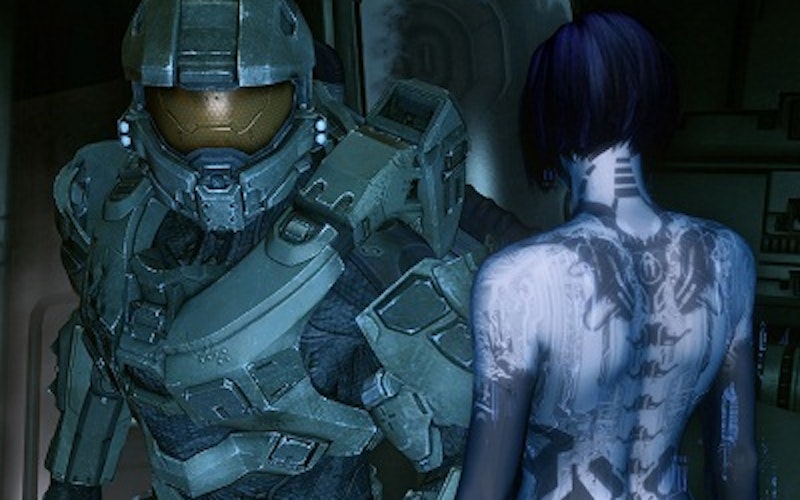
Games
Halo 4 and the cost of salvation
If there is one thing that video games have in common with the Bible, it is the narrative of cosmic salvation achieved through violence.
In most AAA action video games we are tasked with fighting forces bent on destroying life as we know it. Similarly, the Bible tells the story of God’s plan to save the world from spiritual forces that threaten to undo it. The main difference between the two is the manner in which salvation is achieved. In the Bible, Christ Himself endures the violence necessary to save the world. In action games, the world is saved by means of rocket launchers and assault rifles.
The problem with such games is that they rarely explore the cost of being a savior - we paint the hills with blood and ride off into the sunset. They let us be saviors without counting the cost. They give us the resurrection without the cross.
The Halo series has more or less been following this formula for over a decade. The game’s protagonist, John-117, known as Master Chief, discovers that the Covenant is trying to get their hands on ancient weapons. He then seeks to thwart their plans by means of violence. While the world of the Halo games is impressively imagined, the game’s narratives are typical. Consequently, when Halo 4 released (which is actually the sixth game in the series), I was surprised to find myself caring about the story.
The problem with such games is that they rarely explore the cost of being a savior - we paint the hills with blood and ride off into the sunset.
Master Chief has spent his entire life killing aliens. This makes sense in the world of Halo as Chief is a cybernetically enhanced super soldier and is never seen out of his armor and helmet. This has led fans of the series to wonder just how human Chief is. But honestly, the games have hardly explored that territory save for intimating a strained romantic connection between John-117 and his AI companion, Cortana. And yet, as I played through Halo 4’s campaign, I found myself caring for Master Chief for the first time.
Halo 4 finds Master Chief once again tasked with saving the world - this time from a being known as the Didact, who is seeking an ancient weapon with which to enslave humanity. This time, however, there is another, more personal story being told. Cortana is facing rampancy, the process by which AIs permanently shut down by thinking themselves to death. Chief promises Cortana that he will stop the Didact and then take Cortana to the woman who programmed her in hopes of saving her.
Master Chief has lived his entire life as a soldier. He doesn’t ask questions. He does what he is designed to do, which invariably involves a seemingly endless stream of sci-fi violence. For the first time, Chief actually seems torn between saving the world and saving his closest friend. Chief saves the world because that is what he was made to do. But this time, the game focuses on what that costs him.
Most first-person shooters don’t explore the toll war takes on its participants. Consequently, the salvation they call us to achieve generally comes pretty cheap. Near the end of the game, as Cortana is becoming increasingly unstable, she says to Chief, “Promise me when this is over, you’ll figure out which one of us is the machine.”
Halo 4 ends with Master Chief back at a human military base staring off into the distance while an officer talks to him. Chief doesn’t say much. The player can only assume he is thinking about what he has lost. The next thing we see is chief’s armor and helmet being removed. We don’t see Chief’s entire face, but we see enough to answer Cortana’s question.
Topics: Games, Culture At Large, Arts & Leisure